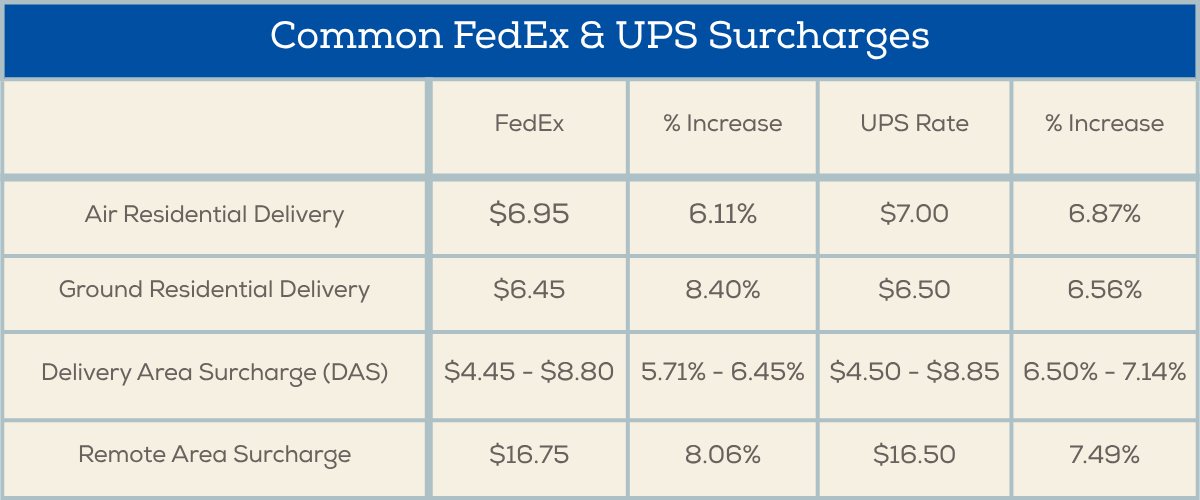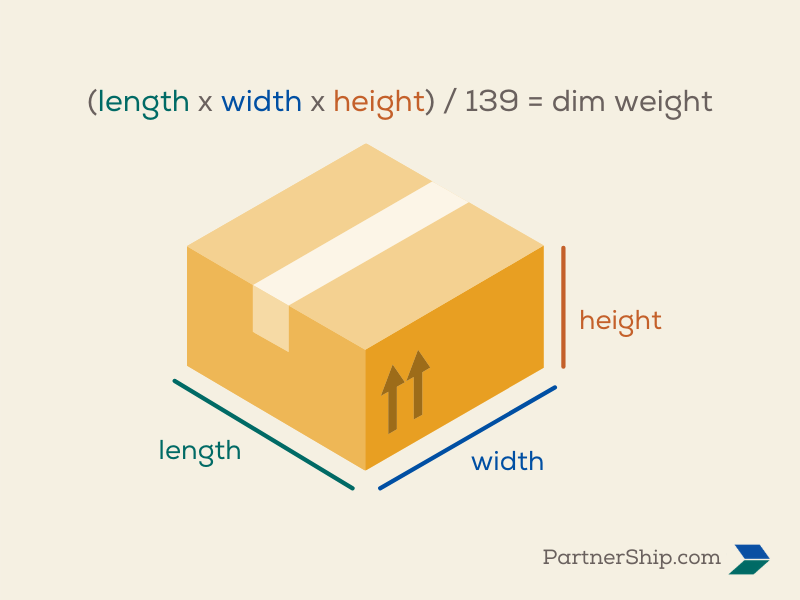Your Essential Guide to the 2026 FedEx and UPS Rate Increases
11/07/2025 — Leah Palnik

Shipping in 2026 is about to get more expensive. FedEx and UPS are both increasing their rates by an average of 5.9%. But don’t let that number fool you — your actual costs will likely climb even higher. With UPS leading the charge on December 22, and FedEx following two weeks later, these increases will have a significant impact for shippers. The real challenge lies in the hidden complexities behind the changes. It’s essential to understand them so you know how your costs will be affected and what you can do about it.
Here's your guide to the FedEx and UPS rate increases for 2026. Jump to:
- A look back at the FedEx and UPS GRIs
- Important changes for 2026
- How the FedEx and UPS rate changes will affect your costs in 2026
- What you can do to mitigate the effects of the FedEx and UPS rate increases
A look back at the FedEx and UPS GRIs
FedEx and UPS have a long history of mirroring each other’s pricing. They typically announce the same general rate increase (GRI) and have very similar pricing strategies. Bottom line, the published rates aren’t a major differentiator between the two carriers.This marks the third consecutive year that both carriers have announced an average increase of 5.9% — a level first introduced in 2022 after several years of 4.9% hikes. In 2023, rates climbed even higher to 6.9%, coinciding with a surge in shipping demand fueled by pandemic-driven e-commerce growth. The return to a 5.9% increase in 2024, 2025, and now 2026 shows that while demand has stabilized, the carriers continue to adjust pricing to offset expenses and network investments.
Some important quick facts about the new FedEx and UPS rates:
- The new FedEx rates take effect on January 5, 2026, while the UPS rates take effect two weeks earlier on December 22, 2025. Notably, UPS is raising its rates sooner, capturing more shipments moving through the end of peak season.
- The 5.9% average doesn’t take surcharges into account — many of which are increasing by more than 5.9%. When you are reviewing your shipping costs, its essential to budget for increases to surcharges as well.
- How much your costs actually go up in 2026 will be closer to 8-12% and will depend on several different factors. The services you use, the surcharges applied, your shipment dimensions and weight, and how far your shipments are traveling all have an effect.
Important changes for 2026
So you already understand that FedEx and UPS rates are going up in the new year. What does that look like exactly? First, you'll want to review the released service guide previews:If all of those numbers, tables, and fine print have you overwhelmed, you're not alone. But there are some key takeaways:
- The minimum charge for both carriers is increasing from $11.32 to $11.99. If you have discounts on your account, this heads-up is for you. Even if your discount would bring you to a base rate that's lower, you're stuck paying the minimum of $11.99 instead.
- UPS is changing the list of zip codes for the Delivery Area Surcharge, following the mid-year adjustment FedEx made to its list in June. Depending on where you’re shipping, you could get hit with a Delivery Area Surcharge on a shipment that it didn’t apply to in the past. On top of that, UPS will be changing the list of zip codes aligned to certain zones. This means that your shipments could be rated based on a more expensive zone. It’s changes like these that can make budgeting for your annual cost increase very challenging.
- The surcharges for Additional Handling and Oversized/Large Packages will now apply to more shipments than before, thanks to changes to the criteria. Starting in January, these fees will be triggered not just by length and girth, but now also by cubic volume. The shape and volume of your package, rather than just its longest sides, will now determine if you get hit with these surcharges.
- Fees for larger, more difficult-to-move packages continue to rise to hefty prices. These fees are already very costly, and in 2026 they're rising higher than the announced average. A fee for an oversized, large package could cost you up to $331 - an increase of over 8%.
- Many other common surcharges are increasing by more than the 5.9% GRI, including Delivery Area and Residential surcharges.

How the FedEx and UPS rate changes will affect your costs in 2026
You can’t take the announcement of a 5.9% increase at face value, unfortunately. You’ll need to determine which services you use the most, how far your shipments travel on average, and how much of your invoice charges can be attributed to fees.Most shippers will see their costs go up over the announced 5.9% average. With that in mind, let’s look at a few factors that could put you at risk for higher-than-average cost increases:
- If you’re shipping larger packages or your packages require special handling. For the past several years, FedEx and UPS have been raising these fees at an alarming rate. And in 2026 these fees will apply to more shipments than before. Any shipment they can’t run through their normal systems costs them more time and money, and these fees are a way to discourage those types of shipments from entering their networks.
- If you’re an e-commerce business. The cost of delivering packages directly to consumers continues to rise at rates that are higher than the average. Between high increases on two-day Express/Air services and increases to residential surcharges, e-commerce businesses will continue to get squeezed.
- If you ship a lot of low-density packages. This is no different than the past several years but is important nonetheless. The pricing structure that FedEx and UPS have in place dissuades larger, lighter shipments. The carriers prefer denser packages that take up less space because they’re able to fit more packages on their delivery vehicles. If your package dimensions cause your shipment to be rated at a higher weight due to dimensional (DIM) weight pricing, your cost increase could be compounded.
What you can do to mitigate the effects of the FedEx and UPS rate increases
- Right-size your packaging. While FedEx and UPS rates are based on weight, that’s not actually the whole story. If your dimensional weight is higher than the actual weight, your package will be rated using the dimensional weight - meaning you’ll be paying more. This makes any excess space within your package extra costly. Focus on packaging that allows space for the items you’re shipping and the necessary cushioning and nothing more.
- Consider opening or using a new distribution center. Shipments with the longest distance to travel cost you the most in general. Getting closer to your customers could be a great strategy for keeping those costs down.
- Evaluate the services you’re using. Ground services are the more economical option, and often the transit times are comparable to what you can get with some Express/Air services. Where you can, utilize Ground services to save on your costs.
- Take advantage of the discounts available to you. PartnerShip offers extremely competitive parcel rates that help businesses reduce shipping costs by an average of 20%. Request a quick rate comparison to see how your current pricing stacks up and where you can start saving.

Wrapping your head around all of the changes for 2026 FedEx and UPS rates can be challenging. But, using this guide to understand what's behind the announced average and published service guides is a good first step. Use this information to properly budget for the new year and set up any mitigation tactics that work best for your business.
